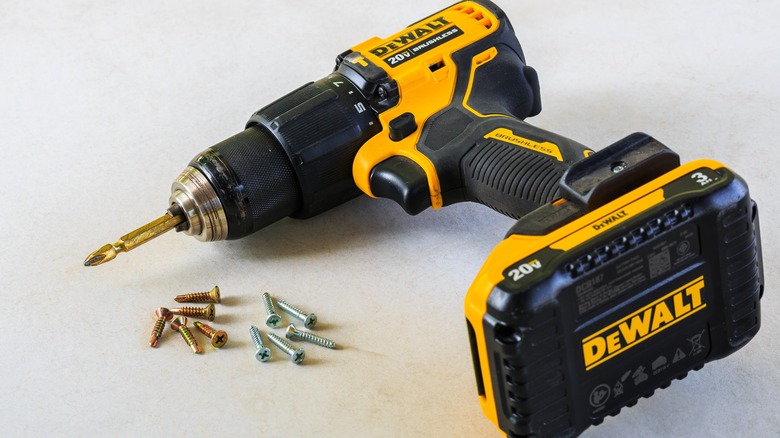In the modern era, battery-powered tools are all the rage. The likes of Ryobi and Milwaukee have embraced this convenient and effective technology wholeheartedly, running everything from drills to sanders on their individual battery systems. DeWalt has done the same, with the majority of its commonly-used tools, in addition to its high-tech tools and products you might not know exist, going cordless. The brand focuses predominantly on 20 and 60-volt batteries, though some tools require 120 volts via two batteries. Regardless of the voltage, though, it’s important to take good care of DeWalt batteries to get the most out of them.
Advertisement
While you want to ensure your DeWalt batteries don’t get wet and that you’re not dropping them on hard surfaces constantly, when it comes to charging, you don’t need to be too careful. It’s often said that leaving rechargeable tool batteries on the charger is bad for them, but in DeWalt’s case, it’s not a big deal. DeWalt batteries are equipped with something called Maintenance Mode, which keeps them at a full charge regardless of how long they’re left on the charger. That means you don’t have to worry about overcharging or potential overheating that could come from leaving a battery to charge for too long.
With all of that said, there are some other important details pertaining to DeWalt battery charging that you should know about.
Advertisement
DeWalt battery maintenance depends on the battery type
First and foremost, it should be recognized that there are two different kinds of DeWalt batteries on the market: lithium-ion and nickel-cadmium. They both work effectively when paired with DeWalt tools, but their makeup causes them to act differently in terms of battery storage.
Advertisement
Llithium-ion batteries are very good at retaining their charge when removed from the charger. So, if you forget to take them off, Maintenance Mode keeps them charged, but if you do remember to remove them, you don’t have to worry about significant power seepage. You’ll be in good shape either way.
Meanwhile, nickel-cadmium batteries tend to lose their charge at a pretty steady rate when not in use and removed from the charger. Between 15 and 20% is lost on the first day, 7 to 10% the following day, and roughly 1% each day beyond that. Therefore, if you have one on the charger and don’t plan to use it immediately, it’s for the best to leave it there. This way, Maintenance Mode will ensure it’s at as full a charge as possible for its next use, unlike if you were to remove it and set it aside for multiple days.
Advertisement
There’s also the matter of one’s own use practices when it comes to DeWalt batteries, as improper use can lead to more damage than leaving batteries on the charger ever could.
Improper use is worse for DeWalt batteries than leaving them to charge
Generally speaking, it’s pretty hard to run a DeWalt battery into the ground. Battery maintenance isn’t too difficult when it comes to charging, so long as you know which battery type you have and understand their habits. Also, DeWalt and rechargeable tool batteries as a whole aren’t susceptible to memory degradation, which occurs when a component is used regularly and repeatedly for the exact same scenario. The varied nature of tool use prevents DeWalt batteries from developing memory and increasing the drain rate. Still, this isn’t to say that improper use is impossible to perform.
Advertisement
They may be able to handle a lot and hold a charge effectively, but DeWalt batteries can be worn down if you’re not mindful of your habits. The worst you can do is push a battery beyond its comfortable limits, as doing so can damage it and reduce its lifespan. Once you notice that the battery is no longer delivering ample power to the tool, don’t force it. Rather, remove it and put it on the charger. Before attaching it, though, if your battery is feeling warm, it’s best to let it cool off for at least two hours. Once it reaches room temperature, it can be safely attached to the charging station.
DeWalt batteries are as durable as they are helpful, but they’re not damage-proof. It’s important to know the dos and don’ts of battery care so they can continue to pair with DeWalt power tools, as well as some useful DeWalt products that aren’t power tools, and help out with all kinds of jobs for as long as possible.
Advertisement


